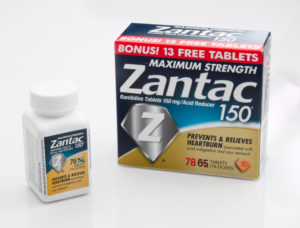New e-prescribing tool aimed at skilled nursing, assisted living
It’s one of the more immediate issues in any given long-term care facility, yet can be difficult to resolve. Accessing needed pain medications for residents in a timely manner is stressful for both the people who hurt and the nurses who seek a prescriber’s signature.
Despite this sense of urgency, federal and state regulations along with the Drug Enforcement Administration’s enforcement practices surrounding controlled substances, particularly the often necessary high-strength Schedule II painkillers, have forced providers to navigate a time-consuming, paper-based process of receiving appropriate signatures on prescriptions.
|
After covering this story the past couple of years, pharmacists and provider advocates have mentioned that electronic prescribing or “e-prescribing” of controlled substances could allow more timely access to Schedule II-V medications. The DEA had released in October 2011 a clarification to interim final rules on the use of e-prescribing for controlled substances, and vendors have since been developing and testing their applications. One of the first available, made specifically for SNFs and assisted living facilities, is the recently announced e-prescribing application to Omnicare, Inc.’s prescriber portal, OmniviewDr.
Prescribers who use the existing OmniviewDr platform can access their profiles through either a desktop computer or mobile device, such as a smartphone, fill a prescription, and then receive a one-time use password signing the prescription. Omnicare then receives the electronically signed prescription and coordinates with a facility’s appointed nurse to deliver that order and have it administered to the resident in need.
“All of this technology serves to create a tighter process than a signature-paper process where it’s moving amongst multiple people,” says Gina Timmons, vice president of Customer Facing Technology at Omnicare.
The company says this new e-prescribing application, which is being piloted in five states, “exponentially speeds up” the process of delivering pain meds to residents. How fast that is exactly, the company does not yet know, Timmons confirms.
“Logically it will shrink [the waiting time], we just don’t have the measurements,” Timmons says. “We’re in our pilot phase right now, enrolling prescribers.”
The importance of the pilot phase is twofold. Not only does Omnicare need to verify that the product is as helpful as intended, its performance in different states must also be assessed. As Timmons points out, despite the federal government auditing and approving Omnicare’s platform as an e-prescribing solution for controlled substances, every state sets its own rules around the process that are in addition to what the DEA enforces. As expected, some states do not allow for e-prescribing of Schedule II substances.
“We’re taking a look at a couple states and their nuances,” she says, “to come up with scenarios on how we can measure compliance, measure increases in quality and decreases in the amount of time between the caregiving site and getting signatures on scrips for us to release at the pharmacy.”
Omnicare’s e-prescribing application has been in development for nearly a year after receiving prescriber interest at the past few AMDA conferences, Timmons says. The company has high expectations for its performance, and forecasts a full market release of the application by the end of 2012.
“We’re hoping it becomes our standard of practice when we deal with how we collect controlled substance prescription signatures from all of our prescribers—that would be our end goal,” she says.
As more vendors develop and release e-prescribing solutions, collecting data on the time saved and the people helped, it will become a developing story in long-term care, one that may see real benefits for both resident and provider alike.

Kevin Kolus wrote for I Advance Senior Care / Long-Term Living when he was an editor. He left the brand in 2012. He is now senior communications manager at Cleveland Clinic.
Related Articles
Topics: Articles , Clinical











